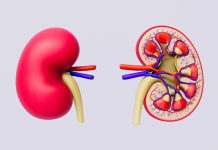
Trillions of microbes in the intestine aid human health, including digestion of breast milk, breaking down fiber and helping control the immune system.
However, antibiotic treatment is known to disrupt the community structure of these microbes—500 to 1,000 bacterial species that have a mainly beneficial influence.
In a new study, researchers found transient and long-term disruption of gut microbes after antibiotics.
The research was done by a team at the University of Alabama at Birmingham.
The study used bioinformatic tools to analyze a previously described study of 18 individuals who had been given a single antibiotic, cefprozil, for a week.
Their fecal samples were collected at pretreatment, at the end of antibiotic treatment and at three months post-treatment.
The team also analyzed previously described data of 12 individuals who were given a combination of three antibiotics—meropenem, gentamicin, and vancomycin—for four days.
In general, the researchers found that strains of the 10 most abundant species remained stable in controls.
In the single antibiotic treatment individuals, 15 of 18 individuals had transient new strains post-treatment that, in turn, were replaced by the original strain by three months post-treatment.
In contrast, the triple-antibiotics individuals showed a strong increase of new strains that persisted as long as six months after treatment, as compared to the single antibiotic and the control individuals.
Furthermore, the fraction of transient strains was also significantly higher in the multiple antibiotics individuals.
This suggested a long-term change to an alternative stable microbiome state.
Given the importance of the microbiome in human health, the findings can be used to help evaluate microbiome stability under different conditions.
For example, they can now provide guidance to clinical investigators to judge the impact of certain treatments for diseases, such as cancer or diabetes, on the gut microbial community that could be significant for the evaluation of outcomes.
Furthermore, this approach could be applied to a patient’s pre- and post-hospitalization to identify individuals who may need further management of their microbiomes.
The lead author of the study is Casey Morrow, Ph.D.
The study is published in Biofilms and Microbiomes.
Copyright © 2019 Knowridge Science Report. All rights reserved.



